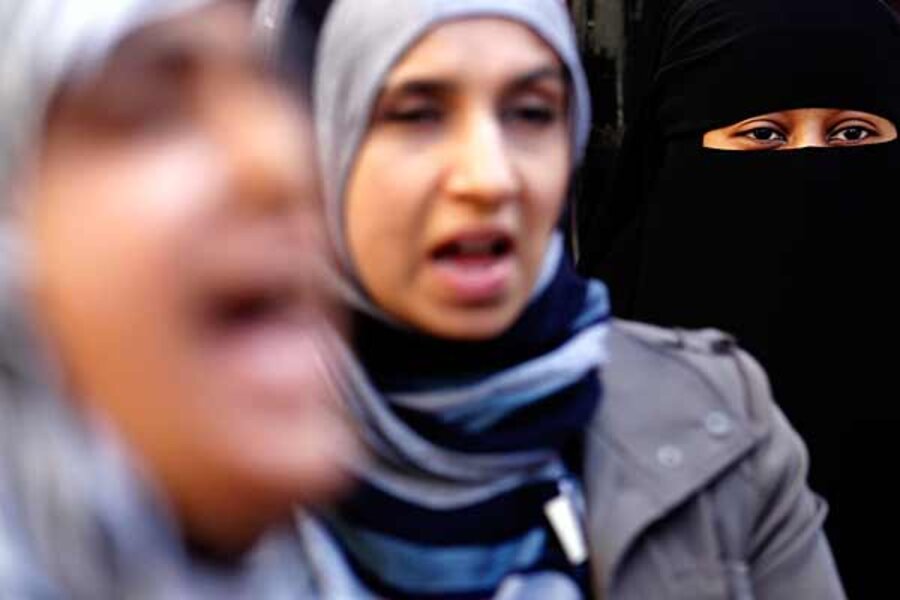Burqa ban: Canada prohibits Muslim veil in citizenship ceremonies (VIDEO)
Loading...
Canada, a country that prides itself on having one of the world’s most liberal systems for immigration, just banned women from wearing veils while taking the oath of citizenship.
Limited to citizenship ceremonies, Canada’s new rules make it the second nation after France to ban face-covering garments in public, although there are a number of countries in Europe that have begun to target Islamic fashion and religious observance in the past few years.
France’s conservative government passed a veil ban in October 2010, a law that went into force in April 2011. The Netherlands also indicated in September that it would impose a ban on veils because the “wearing of clothing that completely or almost entirely covers the face is fundamentally at odds with public life.” In August 2009, Switzerland outlawed the construction of new minarets at Swiss mosques.
Canada’s minister of citizenship and immigration, Jason Kenney, told reporters that he found it “bizarre” that Canada’s rules had once allowed women to wear face-concealing garments during their citizenship ceremonies.
[ Video is no longer available. ]
"Frankly, I found it bizarre that the rules allowed people to take the oath with a veil on,” Mr. Kenney was quoted by the Guardian newspaper as saying. "It is a matter of deep principle that goes to the heart of our identity and our values of openness and equality."
It might not be immediately apparent why three secular nations with long-liberal policies of immigration would suddenly want to take on the question of what Muslim citizens wear in public. But these bans come at a time of severe economic distress, when the influx of outsiders – and particularly those distinguished by their clothing – from the Middle East, North Africa, and South Asia have become points of domestic tension. When conservatives warning of “creeping sharia law” in Western society meet up with liberals worried about the supposed “dehumanizing” effects of Muslim dress on women, such bans can become popular.
But popularity aside, critics warn that bans on veils can also alienate Muslims who are attempting to integrate into Western society, and undermine the very notions of tolerance that Western societies once treasured.
While not all Muslim women wear head coverings, those who do wear them say they do so to conform to the Koran’s injunction for women to be “modest” in their clothing. Women in some South Asian countries such as India and Pakistan wear a simple chador, a scarf that covers their hair, but not their face. Some women in Afghanistan wear a burqa, which is a head-to-toe gown with a mesh-covered hole to look out from. A niqab is a veil that covers most of the face, except for the eyes.
Western nations aren’t the only countries that ban veils. Tunisia banned veils in 1981, Turkey banned them in 1997, and Syria banned veils in universities in July 2010. All three countries see themselves as secular nations with Muslim majorities, although Turkey’s most recent president has loosened such secular rules in recent years, and the authoritarian regime of Zine El Abidine Ben Ali has been replaced by a coalition of democrats and Islamists.
In an interview with the Associated Press, Mr. Kenney indicated that the “burqa ban” would be limited solely to public offices, offering state services.
“We shouldn’t have the state using its power to dictate what people choose to wear in their private lives, but when there are important points of intersection with the state in obtaining state services I think it’s entirely reasonable for people to show who they are,” Kenney told the AP.
Canada’s Muslim citizens, who largely cluster in major cities such as Toronto and Ottawa, are currently estimated to be 940,000, or 2.8 percent of the population. But a recent study by the Washington-based Pew Forum on Religion and Public Life estimated that this minority would grow to 2.7 million or 6.6 percent of the population by 2030.
For Canada, it remains to be seen just how popular this new law will be. France’s experience could be instructive.
As the Monitor’s Robert Marquand wrote in July 2010, the French ban benefited from a strange coalition of far-right French nationalists and liberals attempting to reinforce French notions of secularism and feminism on the French Muslim minority.
"As politics, the burqa is beautiful,” Marquand quoted Pap N’diaye, an opponent of the French ban, and expert at Paris’s School for Advanced Studies in the Social Sciences. “It is a minor real issue with huge political effect and social meaning. It allows an alliance between the right and left. The left, on progressive, secular, feminist grounds; the right, as a sign of the dangers of an Islamic identity."





